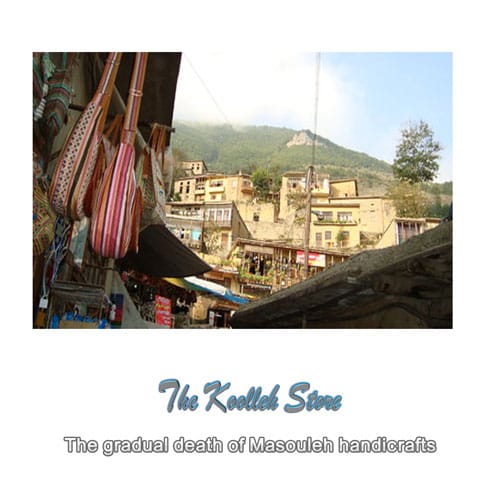The gradual death of Masouleh handicrafts

Masouleh handicrafts are experiencing a gradual death and are no longer traces of the traditional Masouleh market where the producers worked.
Masouleh Gilan, a 800-year-old stepped city, welcomes thousands of domestic and foreign tourists every year who, by traveling to this area, in addition to watching the special architecture of this city, also benefit from its beautiful and scenic nature.
Few tourists travel to Gilan and do not visit the historical city of Masouleh, the architecture of Masouleh is described in one phrase; The courtyard of the upper building, the roof of the lower building, the buildings of Masouleh do not exceed two floors, and its narrow alleys and many stairs do not allow any motor vehicle to enter.
Masouleh, which was once considered the trade center of the three provinces of Gilan, Zanjan and Ardabil, is still a center for the production of various handicrafts by men and women artists due to its variety of handicrafts. Chamoush, giweh, kilim, woolen socks, camouflage gloves, knives and metal handicrafts and all kinds of dolls are among Masouleh’s souvenirs.
It is said that once upon a time, Masouleh market was full of traditional handicraft and confectionery producers.
But today, almost all of the products that take every traveler to the city of Masouleh have become Chinese jewelry stores. Embroidery, hammering, gun-making, knife-making, carpentry, glass-making, coppersmithing, blacksmithing, and… are some of the masouleh handicrafts that died gradually, and some of the masters of some of them are no longer known.
Some live Masuleh handicrafts are also produced by the elderly and are still obsolete today due to old age and disease.
Masouleh carpentry is very famous, but there is no news of old masters of this technique in the city. The doors and windows of Masouleh, which are of great value today, were made by the same craftsmen and carpenters of Masouleh. Today, a carpenter remains in Masouleh, who is not Masouleh, and because he was interested, he was supported and over time, he learned to weave and carpentry in Masouleh.
Embroidery is one of the traditional arts of Masouleh. The leather cover, which later took the name of Chamosh, is one of the famous body covers of the Masulehs, which was made by the artists of this city. It is said that the three rows of the market were occupied by chamois embroiderers, who took leather directly from tanneries and sewed chamois.
Today, of all the shoemakers, only one embroiders in Masouleh, who is still young, and says he learned the art from his grandfather. It is said that another Chamush embroiderer lives in Fooman and more or less embroiders.
Majid Farnia, the only Masouleh embroiderer, says about these shoes: When I learned to embroider Chamouleh from my grandfather, there were three or four embroiderers left in Masouleh, but eventually they died and today I embroider in this city. Chamoosh is different from ordinary shoes, it does not have left or right, and it does not use nails or glue.
Farnia says about this: Chamosh is made of cow leather and honey wax is used in its production. Tools such as gauze (for cutting leather), plows (for thinning leather), leather beaters (for beating leather) and needles and scissors are also used to make it.
Sewing each sleeve takes between one to three weeks, and the difference between male and female models is more in flower arranging, design and role.

